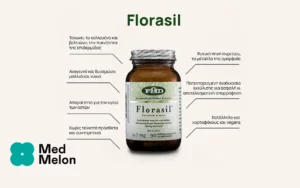Scientific Names of Bilberry Berry: Vaccinium myrtillus L. [Fam. Ericaceae]
Forms:
Bilberry 25% anthocyanin extract; Bilberry, dried whole berries
Traditional Usage:
– Angiopathy
– Anti-inflammatory
– Antioxidant
– Bleeding, excessive post-operative
– Blood Clots
– Blood Platelet Stickiness
– Blood Purification
– Bone and Joint Problems
– Breathing Disorders
– Bronchitis
– Cataracts
– Circulatory Disorders
– Diarrhea
– Enteritis
– Eyesight Disorders
– Hemorrhoids
– Lymphatic System Disorders
– Microangiopathy
– Skin Problems
– Sore Throat
– Urinary Tract Problems
– Vascular Disorders
Overview:
Bilberries, Vaccinium myrtillus L. [Fam. Ericaceae], otherwise known as European blueberries, are rich in colorful flavonoids called anthocyanins. Anthocyanins are powerful antioxidants that have been shown to protect skin from sun damage, prevent LDL cholesterol oxidation better than vitamin C and prevent blood platelet stickiness better than aspirin. The most notable use of bilberries in Europe is for their eyesight and vascular strengthening powers. In human clinical studies, bilberry extract improved eyesight and increased ocular blood supply in 75% of patients, improved nearsightedness after five months of regular use while an 83% improvement in visual acuity was recorded after only fifteen days. Within less than an hour, bilberry significantly increases the production of rhodopsin in the retina, a purple pigment needed for night vision. Bilberry extract is also excellent for stopping cataracts: 48 out of 50 patients treated with bilberry extract and vitamin E arrested the progression of their senile cortical cataracts. Anthocyanins bind to and protect collagen and elastin in the body, they stabilize phospholipids in cell membranes and they increase the strength of arterial walls within hours of taking them. German studies show that bilberry anthocyanin extracts effectively reduce excessive bleeding by 71% and reduce clotting-related health risks. Doctors in Europe routinely prescribe bilberry extract to minimize post-operative bleeding. Studies also document bilberry’s efficacy in reducing microangiopathy – thickenings of capillaries due to abnormal collagen and glycoprotein synthesis. In one study, 54 patients given 500-600 mg/day of the berry extract for eight to 33 months had almost total normalization. Bilberry anthocyanins also support the lymphatic system, prevent bacteria from adhering to the bladder wall (just as well as cranberry) and normalize many other cellular functions. The German Commission E also lists the berries for treating diarrhea, enteritis, sore throat and irritated mucous membranes of the mouth and throat.
Active Ingredients:
Bilberry Berry contain: Approximately 0.7% anthocyanins including, largely, delphinidin that colors the berries reddish purple. The berries also contain up to 10% tannins, mostly catechol tannins. The berries also contain other flavonoids, plant acids, invert sugar and pectins. The highest quality standardized extracts of bilberries, those used in clinical trials, contain 25% anthocyanins, which corresponds to approximately 36% anthocyanosides (anthocyanins with sugars attached).
Suggested Amount:
For treatment of eyesight or vascular problems: Take between 250-1000mg of bilberry berry extract standardized to contain 25% anthocyanins daily. For soothing irritated mucous membranes of the mouth and throat or for treating diarrhea: Unless otherwise prescribed, 1-2 tablespoonfuls of bilberry fruit are boiled in water (ca. 150ml) for 10 minutes and passed through a tea strainer while still hot. To treat diarrhea in children or adults, a cup of the freshly prepared tea is drunk cold several times a day. Alternatively, place the berries in cold water for two hours, allowing them to swell and then take 1-2 teaspoonfuls of these berries with some fluid for the same purpose. Blueberry ‘soup’ is still today used in Sweden for treating diarrhea.
Drug Interactions:
None known
Contraindications:
None known
Side Effects:
None known
References:
Cohen-Boulakia F, Valensi PE, Boulahdour H, Lestrade R, Dufour-Lamartinie JF, Hort-Legrand C, Behar A. 2000. In vivo sequential study of skeletal muscle capillary permeability in diabetic rats: effect of anthocyanosides. Metabolism. 2000 Jul; 49(7): 880-5.
Laplaud PM, Lelubre A, Chapman MJ. 1997. Antioxidant action of Vaccinium myrtillus extract on human low density lipoproteins in vitro: initial observations. Fundam Clin Pharmacol. 1997; 11(1): 35-40.
Lietti, A, Cristoni, A, Picci, M. 1976. Studies on Vaccinium myrtillus anthocyanosides. I. Vasoprotective and antiinflammatory activity. Arzneim Forsch 26(5): 829-832.
Mian, E., Curri, SB, Lietti, A, Bombardelli, E. 1977. Anthocyanosides and the walls of microvessels: further aspects of the mechanism of action of their protective effect in syndromes due to abnormal capillary fragility. J. Minerva Med 68(52): 3565-3581.
Wichtl M (ed). 1994. Myrtilli fructus – Bilberry fruit In Herbal Drugs and Phyto-pharmaceuticals. (English translation by Norman Grainger Bisset). CRC Press, Stuttgart, pp. 351-352.




